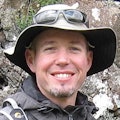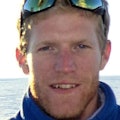Our research addresses fundamental questions about the dynamic processes that shape the ocean basins, the continental landmasses we live on, our planet’s interior, and the intricate linkages between them.
Topics of interest include
- mantle circulation, from subduction dynamics to whole-mantle evolution
- structure and rheology of aseismic and earthquake-generating fault zones
- continental margin evolution from rift to drift
- active margin evolution from subduction initiation to ocean closure
- the interplay between magmatic, tectonic, and hydrothermal processes at mid-ocean ridges.
To tackle complex questions, our research combines fieldwork, numerical modelling, and state-of-the-art laboratory studies. In our 3D Seismic Laboratory, we employ 2D and 3D seismic data to investigate basin evolution, accretionary prisms, and the tectonics of passive continental margins.
We investigate mantle geodynamics, fault and shear zone evolution, and the seismic cycle via numerical modelling, utilising Cardiff University and National high-performance computing facilities. Extensive microanalytical facilities, including optical and scanning electron microscopy, LA-ICP-MS, and ICP-OES, are utilised for microstructural and geochemical analyses of mineral and whole rock samples.
We are active in large collaborative efforts such as ocean and continental drilling, and on- and off-shore geophysical surveys. Our machine learning seismology team leverages high-resolution observations from global dense nodal arrays and distributed acoustic sensing to probe earthquake dynamics.
Many of our research projects cross over into themes within the other research groups including Minerals and Energy, Magmatic Processes, and Environmental Hazards and Risk.
Sustainable Development Goals
Our work is directly relevant UN’s Sustainable Development Goal 11: Sustainable Cities and Communities.
People
Academic staff
Postgraduate students
Schools
Next steps
Research that matters
Our research makes a difference to people’s lives as we work across disciplines to tackle major challenges facing society, the economy and our environment.
Postgraduate research
Our research degrees give the opportunity to investigate a specific topic in depth among field-leading researchers.
Our research impact
Our research case studies highlight some of the areas where we deliver positive research impact.















